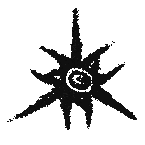Loom Design/Loomates/Austronesia
Mac & Magic Loom Design focuses mainly on backstrap weaving loin looms of Austronesian & Austro-asiatic origin and its relatives. Next to these there are several native loin looms in North and South America and Africa. A few types of loin looms you may even find in Europe.
Asian Loin Looms
Most of loin looms in Asia belong to the Austronesian or Austro-asiatic group. In general it seems easy to differ Austronesian looms from Austro-asiatic looms by the location: So, belongs the loom to Bali, a part of the Southeast Asian Islands (ISEA), it's classified as an Austronesian loom. The term Austronesia ("southern island") tells us this. Austro-asiatic in general are all loin looms on the mainland of Southeast Asia (MSEA). But it isn't that easy!
The Cham people in Vietnam belong to the Sundanese people, mainly found in Indonesia; they are a part of the Austronesian branch. So the loin loom of the Cham people in Vietnam is a good example for exceptions of this mainland/island-formula. In case of the Champa Loom it's seems a clear fact, but the Balinese Loin Loom is another example, where things keep confused. The loom by itself fits into the scheme of the surrounding Indonesian type of loin looms. Even there isn't that much proof, Balinese keep going on to mention, they came down the Himalaya! Is it just a myth? In this case the inner Balinese circle may have once belonged to the Austro-asiatic people. If so, it's still the question, if this had influence on their loom-type. Bali has anyway its own exotic mix of weaving traditions.
Fact is, that there was a long-lasting trading connection between the Northeastern area of India and Nusantara run by the Cham people, that led to the Majapahit-era on Java island. Anyway it seems the Austro-asiatic tribes had reached the region of Malaysia, Sumatra, Borneo and Java before the Austronesians arrived. So it gets difficult to verify, what is Austronesian and what Austro-asiatic. But in the case of Indonesian loin looms all are classified as Austronesian Looms to keep things easy. Therefor Filipino Looms may be clear examples of Austronesian-type loin looms with no or not that strong influence of Austro-asiatic loin looms.
|
A great bi-lingual introduction (in english and german) into 2000 years of far distance trading network and cultural exchange of the Austronesians by Urs Ramseyer: NUSANTARA - The Taste of Paradise. |
Austronesian Loin Looms
Generally spoken all loin looms on the Southeast Asian Islands including Melanesia & Micronesia are of Austronesian origin, as there is Taiwan, Philippines, Indonesia. Most of these Austronesian models may taken their way from China downwards to the southern island by rafts oversea. An exception of this "rule" is the Champa Station Loom of the Cham people in Central Vietnam. The Cham belong to the Sundanese people in Indonesia, who once split about 2.000 years ago and went back to mainland. Their station loom is perfect sample of an "Austronesian loom on mainland" !
Examples of loin looms of Austronesian origin:
- Champa Station Loom (Cham people - Vietnam)
- Sundan Loom (Sundanese people - Java)
- Atayal Box Loom (Atayal people - Taiwan)
- Paiwan Foot Loom (Paiwan people - Taiwan)
- Baduy Stilt Loom (Kanekes people - Java)
Austro-asiatic Loin Looms
Basically all loin looms on the Southeast Asian mainland (MSEA) are mainly of Austro-asiatic origin and took its way from China to its region overland; by crossing the Himalaya or a eastern route. That means, all loin looms of the Seven Sisters in Northeast-India, including neighbouring Tibet, Bhutan, Nepal, Bangladesh are of Austro-asiatic origin; also most of the loin looms in Myanmar, Laos, Vietnam and Cambodia. The existence of Austro-asiatic loin looms in Thailand and Malaysia is nearby vanished.
Examples of loin looms of Austro-asiatic origin:
- Chakma Stake Loom (Chakma people - Bangladesh)
- Katu Foot Loom (Katu people - Laos/Vietnam)
- Phang Thak Station Loom (Bhutan)
- Karbi Stake Loom (Karbi people - Assam)
American Loin Looms
Next to Asia you may find kinds of backstrap weaving loin looms on several other continents. There are plenty of Native American Loin Looms in both, North- and South-America.
African Loin Looms
There are several great artistic examples of loin looms on the African continent, but we haven't found any of these on youtube! So it makes no sense to open up a playlist on African loin looms yet! There is no proof of a connection between these African and other loin looms on other continents.
An exception is the framed ground loom on Madagascar. Some people on the West coast of Madagascar belong to the Sundanese people, that came once from Borneo. Funny how the actual loom of these people is framed, but shows out its Austronesian roots. It seems clear that this framed loom didn't have impact on African mainland cultures introducing loin loom techniques in Africa.
Further Loin Loom Cultures
DE
Austronesische Gruppe
Die "Austronesier" sind eine Gruppe nomadischer Völker, die einst auf dem chinesischen Festland am Yangtze sesshaft geworden waren. Typische Merkmale ihrer Kultur sind der Reisanbau, damit die Ochsenhaltung, aber auch der Hüftwebstuhl, der den Ethnologen tieferen Einblick in die Vergangenheit gewährt als es die Sprache überhaupt kann. Vor ca. 3500 Jahren machten sie sich in kleinen Gruppen auf mit Flossen den Pazifik zu erkunden. Auf dem Festland gibt es heute kaum noch Spuren von ihnen, obwohl ihr Fußwebgerät damals große Verbreitung auf dem Festland fand. Nach anfänglichen Bewegungen auf die nahegelegenen Inseln Taiwan und Hainan, stießen sie weiter vor auf die Philippinen und erreichten bald östliche Teile des heutigen Indonesiens. In einer weiteren Welle erreichte man bald den Rest von Indonesien, aber auch das polynesische Inselreich. Um 800 CE erreichte man Hawaii und die Osterinseln, eventuell betraten sie sogar den amerikanischen Kontinent. Zwischen 500 und 800 CE verließ eine Gruppe Borneo und erreichte das weit entfernte Madagascar. Um 1200 CE betraten sie Neuseeland.
Nicht nur ihre Textilien sind Bücher, besonders ihre mobilen Webgeräte sind die Gerätschaften, mit denen man den spannenden Stoff ersponnen hat, sie sind mehr noch Museen, die uns Details dieser Reisen aus lang vergangenen Zeiten erblicken lassen, und hierdurch in unsere Zukunft schauen lassen: We are living in a woven world!





















Write a comment